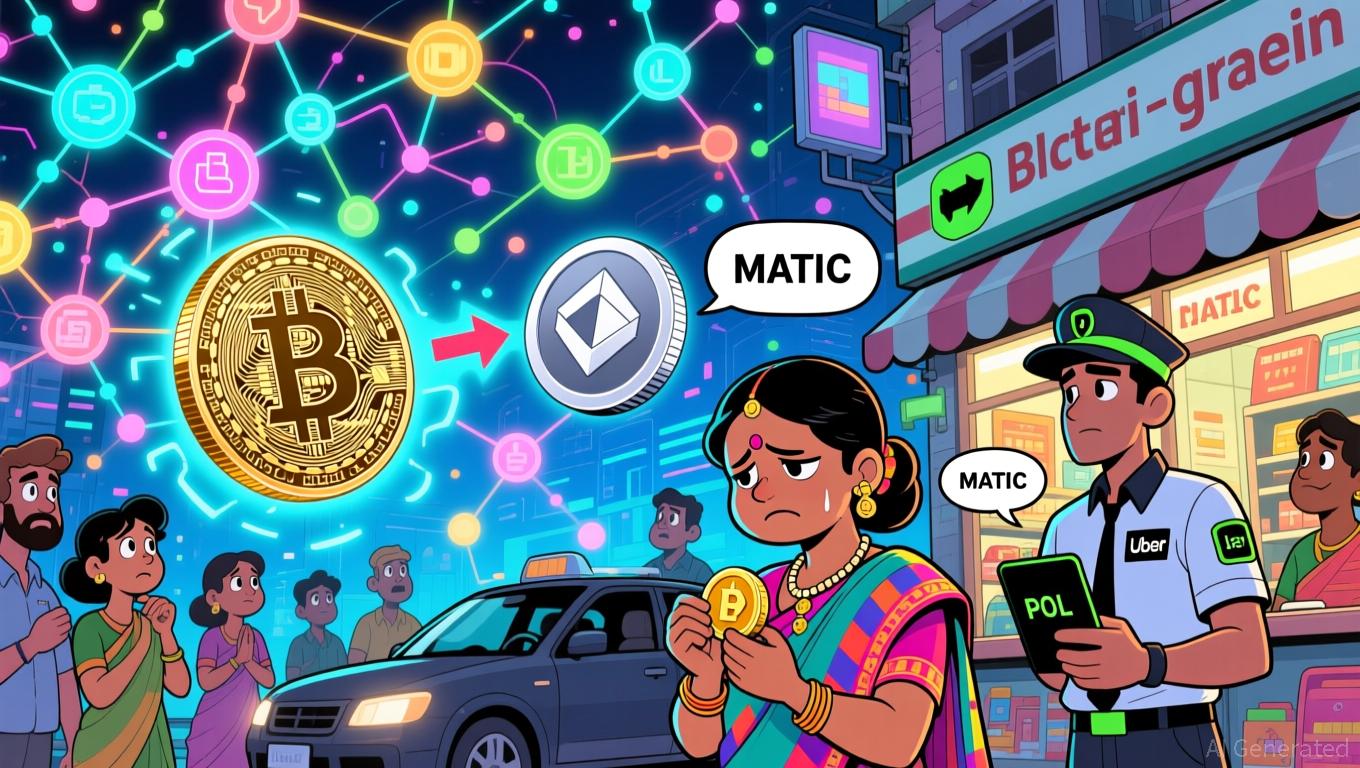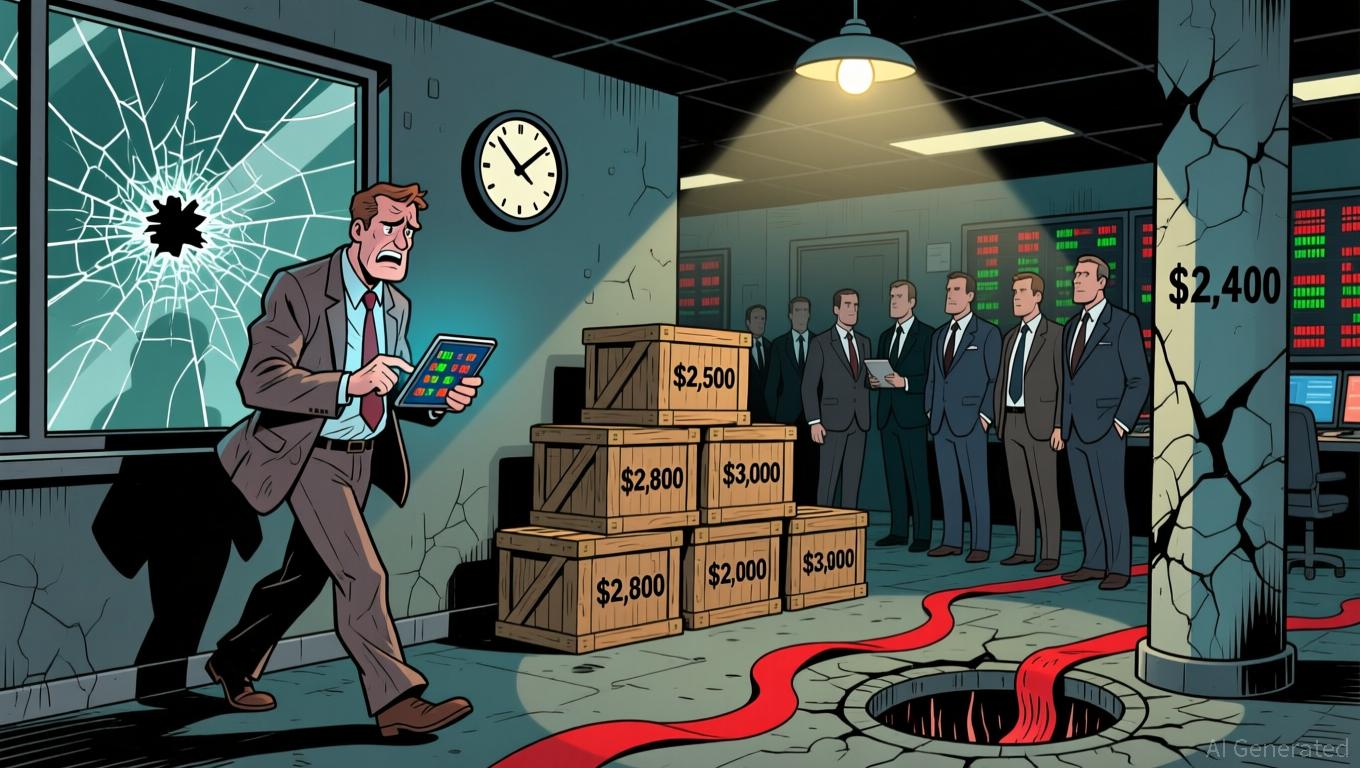Innovation or Tradition: Polygon's New Branding Stirs Debate Within the Community
- Polygon co-founder Sandeep Nailwal reconsiders rebranding from POL back to MATIC amid community debate over brand recognition and user confusion. - The 2024 migration to POL aimed to align with Polygon's multi-chain ecosystem but faced criticism for diluting familiarity among retail users. - POL's 89% price decline since March 2024 has intensified concerns about rebranding's market impact, despite CEO Marc Boiron's scalability defense. - Community responses remain divided, with some advocating for MATIC'
Polygon co-founder Sandeep Nailwal is reconsidering the network’s approach to token branding, igniting a public discussion about whether the project should switch its ticker symbol from
The transition from MATIC to POL in September 2024 was a key part of Polygon’s 2.0 roadmap, which aimed to support the network’s shift toward a multi-chain ecosystem featuring zk-rollups and independent “supernets.” While MATIC functioned as an ERC-20 token on

The community is split on whether to reverse the change. Some believe MATIC’s established reputation makes it the preferable option, while others argue that POL has already gained traction and another change could erode confidence. One X user commented that “POL has already cleared the toughest hurdle, which is gaining initial acceptance,” while another suggested new tickers like PGON to blend tradition with a fresh identity
Polygon’s token price trends have also played a role in the conversation. According to CoinGecko, POL is currently valued at $0.13, marking an 89% drop from its peak of $1.29 in March 2024
Nailwal’s willingness to listen to community input reflects the decentralized nature of blockchain governance, where collective voices often shape decisions. However, whether a return to MATIC is practical remains unclear. Exchanges may be reluctant to implement another ticker change, and repeated rebranding could further fragment the brand. As the discussion continues, Polygon’s situation illustrates the complex balance between innovation and maintaining a consistent brand in the cryptocurrency industry.
Disclaimer: The content of this article solely reflects the author's opinion and does not represent the platform in any capacity. This article is not intended to serve as a reference for making investment decisions.
You may also like
XRP News Today: Abu Dhabi’s Green Light Establishes UAE as a Pioneer in Stablecoin Development
- Ripple's RLUSD stablecoin gains Abu Dhabi regulatory approval as UAE advances digital finance leadership. - ADGM's "Accepted Fiat-Referenced Token" designation enables institutional use for lending and cross-border payments. - RLUSD's $1.2B market cap growth reflects institutional demand, backed by USD reserves and dual blockchain operations. - UAE's ADGM-DIFC regulatory synergy attracts global fintechs , with Ripple expanding partnerships across Africa and Asia. - Regulatory milestones position RLUSD to
Ethereum Updates: Ethereum Drops to $2,800, Prompting Surge in Demand for ZKP's Hardware-Based Presale
- Ethereum's price fell below $2,800, triggering $6.5M liquidations and testing critical support levels amid declining on-chain demand metrics. - Institutional players like BitMine accumulated 3.62M ETH (~$10.4B) despite the selloff, signaling long-term bullish conviction. - ZKP's hardware-driven presale gained traction with $17M in ready-to-ship Proof Pods and Miami Dolphins partnership for privacy-focused sports analytics. - Mutuum Finance's $19M DeFi presale and ZKP's auction model with $50K wallet caps

Vitalik Buterin Supports ZKsync: What This Means for Layer 2 Scaling
- Vitalik Buterin endorsed ZKsync in late 2025, highlighting its "underrated and valuable" work alongside the Atlas upgrade achieving 15,000 TPS and $0.0001 fees. - ZKsync's zero-knowledge rollups and EVM compatibility enabled institutional adoption by Deutsche Bank , Sony , and Goldman Sachs for cross-chain and enterprise use cases. - The Fusaka upgrade aims to double throughput to 30,000 TPS by December 2025, positioning ZKsync to compete with Polygon zkEVM and StarkNet in Ethereum's Layer 2 landscape. -

The ZK Atlas Enhancement: Revolutionizing Blockchain Scalability?
- ZKsync's 2025 Atlas Upgrade achieves 15,000–43,000 TPS with sub-1-second finality, addressing Ethereum L2 scalability bottlenecks via Airbender proofs and modular OS. - DeFi protocols like Aave and Lido leverage ZKsync's $0.0001/tx costs to unify liquidity, while Deutsche Bank and Sony adopt its trustless cross-chain infrastructure for compliance and transparency. - ZK token surged 150% post-upgrade, with TVL hitting $3.3B and analysts projecting 60.7% CAGR for ZK Layer-2 solutions by 2031 amid instituti
